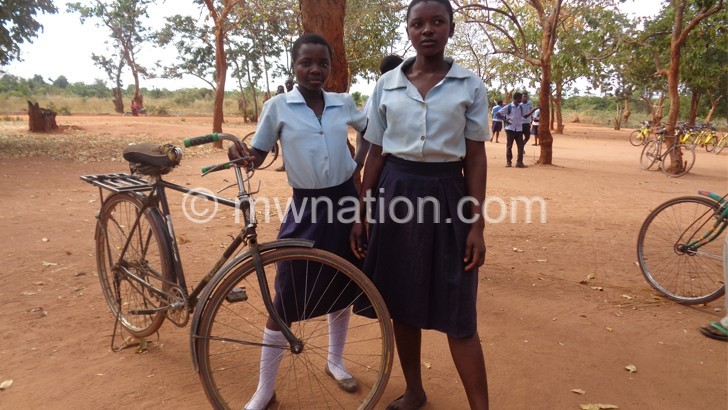Long walk to school
Madaliso Mwatitha, 13, dreams of becoming a nurse. She wants to serve her community, which faces a huge shortage of health workers.
But to get there, she has to brace for more years of walking long distance to access secondary education. She endured eight years of walking 12 kilometres to-and-from school, during her primary education and hoped for something better at secondary school level.
“I wanted to be selected to either Salima or Chipoka Secondary School, but the dream never materialised,” says Mwatitha, a Form One learner at Kaphirintiwa Community Day Secondary School (CDSS).

Her desire for a conventional secondary school was inspired by availability of boarding facilities. The eight years of walking to Kaphirintiwa Primary School were enough for her, and she approached the 2017 Primary School Leaving Certificate of Education (PSLCE) examinations with confidence, to end the nightmare. She ended up at Kaphirintiwa CDSS, the only secondary school in Traditional Authority Khombedza in Salima.
Kaphirintiwa CDSS lies 10km from Mwatitha’s home village. She is deeply troubled because the same challenge that haunted her school performance is still bothering her.
She says her poor performance in primary school was largely due to elements associated with the long distance to school. Now, she fears for the same at secondary level, and feels her dreams and chances of going to any college of nursing are in jeopardy.
“If my parents were not poor, I could have turned down the offer to Kaphirintiwa CDSS and go to a private secondary school with boarding facilities,” says Mwatitha.
The reality is that she is trapped in this problem for good, and from as early as 4.30am every day.
“If I am walking to school, I usually leave home at around 5am and 30 minutes later when a bicycle is available. I have to be at school before 7am,” says Mwatitha.
But she cannot remember the last time she was in school on time. She arrives tired to pay attention to classwork.
Pilirani Phiri, another learner at Kaphirintiwa CDSS faces the same challenge. She walks 12 kilometres to-and-from school. She says the long distance to school is already affecting her class performance.
“Those within a reasonable distance to school have all the energy and time to do better. I am frustrated even before stepping out of the house because of the mere thought of distance to be covered,” she says.
Phiri envies those who cycle to school, saying cycling eases the burden she faces in her quest to access education.
Group village head (GVH) Guwenda, whose area is home to Kaphirintiwa CDSS, says many children, especially girls are failing to complete secondary school because of long distances.
“Many of them end up in marriage,” he laments.
He says they are encouraging parents who can afford a bicycle to ensure their wards have easy access to school.
Kaphirintiwa CDSS headteacher Ernest Katuku says long distances to school are ruining the future of many students in the community.
“The CDSS’s catchment area covers a radius of more than 30 kilometres, thus majority of children in this area walk long distances to the school,” he says.
The CDSS offers self-boarding, but Katuku says the facility is underutilised because most households have limited financial resources to keep their wards in boarding.
With 157 primary schools that graduate around 10 000 learners for secondary education, the district is also faced with lack of space. It has two conventional secondary schools, 16 CDSSs and eight private secondary schools.
District education manager (DEM) Christopher Kumikundi believes construction of more CDSSs can help to reduce the problem of long distances and congestion in schools.
“We need to establish more schools within a reasonable distance. This is not the duty of government alone, communities can also initiate school projects,” he says.
Kumikundi adds that the education policy empowers communities to construct school structures with approval from the DEM’s office.
But without the availability of enough structures within short distances, the potential benefits of school will always be difficult to attain for learners such as Mwatitha and Phiri, who are committed to meet their dreams.
“There is nothing we can do, we want education; hence we have to brace from the struggle,” says Mwatitha.





